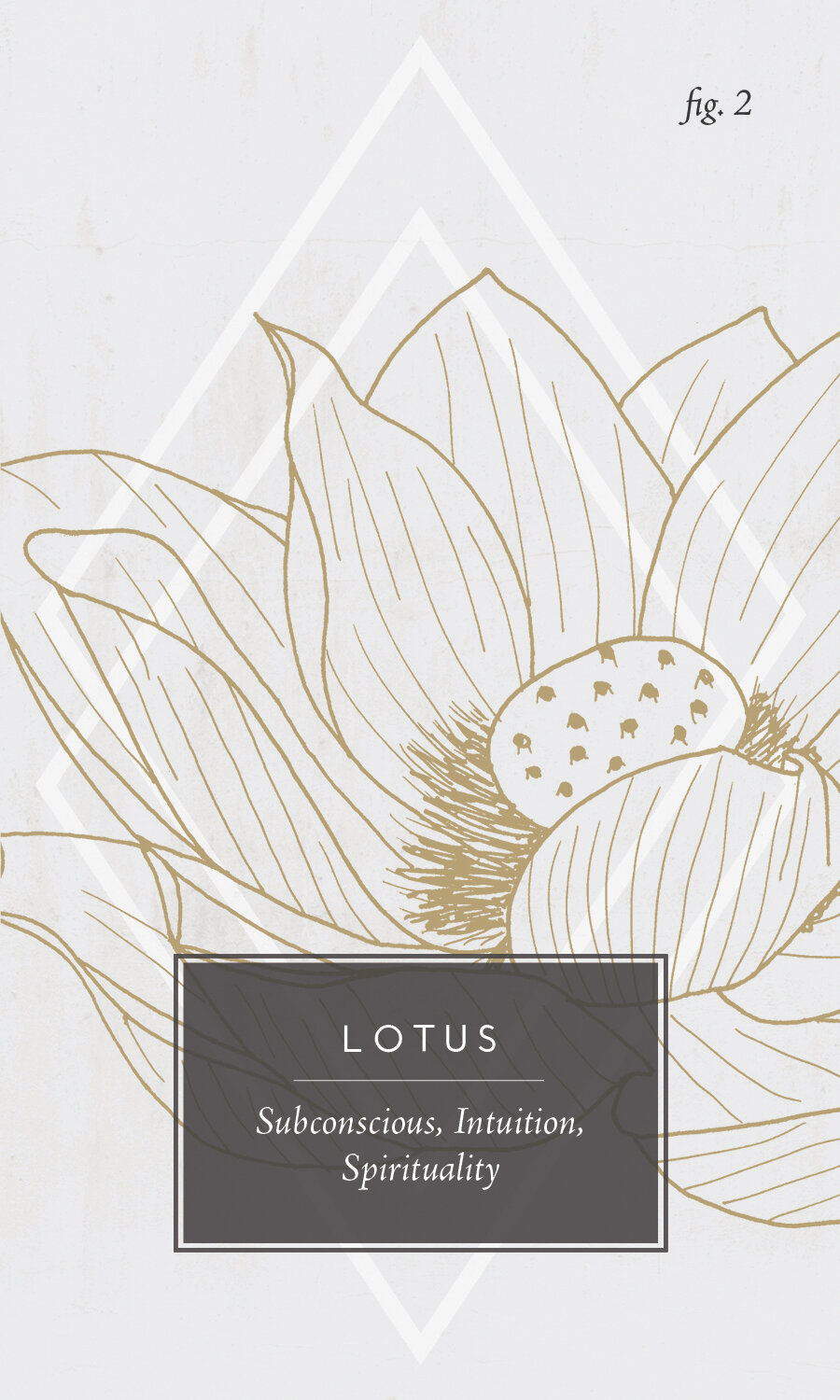02: Lotus / The High Priestess
The High Priestess Tarot Card Meanings
It’s Tarot Tuesday! Every Tuesday I will be posting an article diving deeper into an individual tarot card, to help me better understand its meaning, and to help educate others in the process. I’ll also share about the connection between each tarot card and the botanical I paired it with in my Fleurot tarot deck, which is based around the Victorian Language of Flowers.
Today we are diving into the card numbered 2 in the traditional Rider-Waite tarot, The High Priestess (which is the Lotus in the Fleurot deck).
Love this imagery? Purchase the Fleurot Deck here!
Keywords
The High Priestess | Subconscious, Intuition, Spirituality
Lotus | Enlightenment, Devotion, Purity
In the traditional Rider-Waite Colman-Smith tarot deck, the High Priestess is represented by a cloaked figure seated between two pillars. Behind this figure is a thin veil adorned with pomegranate seeds. The veil represents the separation between the conscious and unconscious realms, and the pomegranates are a tie to the sacred feminine, fertility, and a reference to Persephone, goddess of the underworld.
The two pillars are black and white, representing duality and the balance between masculine and feminine, darkness and light. At this figure’s feet is a crescent moon, representing their ties to the intuitive and unconscious mind, and the cycles of the moon.
The High Priestess is given the number two for the dual realms they are able to inhibit - seamlessly transitioning between the subconscious and conscious mind, masculine and feminine energies, the tangible and intangible. The world is not always as it seems, and dual energies are often at play. This card is about intuition, and a heightened awareness of hidden or secret information.
“Now is the time to be still so you can tune in to your intuition. The answers you are seeking will come from within, from your deepest truth and ‘knowing’.”
For more in-depth information about the meaning of The High Priestess tarot card, I highly recommend checking out the description by Biddy Tarot!
The Lotus Nelumbo Nucifera
During the Victorian Era, people would exchange flowers and plants as a way of sending messages to express their true feelings (ones they couldn’t often express out loud). The system they developed was published in Flower Dictionaries which allowed the meanings of each flower to be widely accepted, and this language was often dubbed ‘Floriography’.
The lotus is a many-petaled flower, often white, and often growing in the water of ponds and creeks. It is considered a sacred bloom in many Eastern countries, and often has spiritual significance. Scholars believe the Egyptians viewed the lotus as a symbol of rebirth, as it appears to sink in the evening and rise again the next morning. Priests and other religious leaders often brewed a tea of lotus petals with sedative and mild psychotropic effects, which aided in their ritual work.
The lotus flower has direct ties to Buddhism—while rooted in mud, they bloom on long stalks as if floating above the muddy waters of attachment and desire. Many religious figures are often seen depicted with lotus at their feet, and there is even a seated position called the Lotus (a cross-legged position where the knees are bent outward, mimicking these delicate petals)
In the Fleurot deck, I decided to correspond this sacred blossom to the High Priestess, who deals extensively with the subconscious, intuition, and spirituality. How can you rise above the muddy waters and connect intuitively with your subconscious realm?


